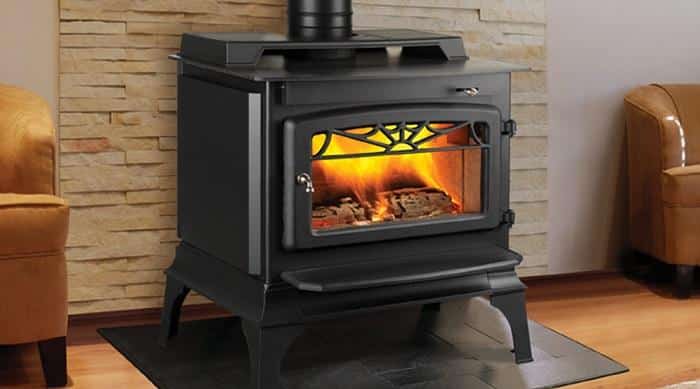Wood-burning stoves are essentially simple machines that provide heat for warmth and cooking when we need it most. But like everything else, regular and annual maintenance are essential, especially if you are totally dependent on the stove for heat.
Summer is obviously the best time for maintenance. You can’t do much with a wood stove that’s blistering hot — and it’s a long day in the winter when you have to shut it down and let it cool for repairs. But there are weekly if not daily tasks that have to occur while the stove is hot.
Regardless of the design of your stove, coals and especially ash are inevitable. Some catalytic stoves burn more efficient and result in less ash, but even they need regular cleaning.
One regular maintenance item, of course, is cleaning ash, with the fundamental tools being an ash shovel and an ash bucket. Both are metal and need to resist the residual heat that the coals and ash will still have. Your dedicated ash-dump areas should be away from the house or other structures and anything else that’s flammable.
These Solar Backup Generators Deliver 4 Times More Power Than Other Models!
Beyond the routine ash cleaning, most maintenance needs to be done when you’re not using the stove. Here are the common areas to check and maintain:
Check the Gaskets and Doors
The firebox door should be inspected very closely for an airtight seal. One of the easiest ways to do this is with the dollar bill test. You close and lock the firebox door with the dollar halfway between the gasket and the stove. Then, gently tug on the bill and if it shows good resistance while you try to pull it out, you have a good seal. Do this all around the perimeter of the door. All it takes is one weak spot to interfere with the efficiency of the stove or cause a smoke leak.
If the seal is weak, you’ll need to replace the gasket. Gaskets once were made out of a braided rope of asbestos but today they’re made from a fireproof fiberglass braid with a gasket glue. You’ll need to remove the door to make this replacement, and you might want to watch some videos so you get it right.
https://www.youtube.com/watch?v=HAQjTL2xwtI
While you’re replacing the gasket, take some time to inspect the glass window that may be in your firebox door. If there’s a buildup of white ash, it can easily be wiped off with a damp rag. If the stains are brown, you may have to buy a woodstove glass cleaner. The reason you may get these brown stains is because the stove is not burning efficiently. Wet or green wood, low-burning fires, inefficient combustion, and resinous woods like pine are often the cause of these stains.
Don’t Forget Flue and Chimney Maintenance
I have a chimney sweep come out once a year to clear the creosote. Creosote is made up of particles that adhere to the sides of the chimney pipe. The danger is that creosote is highly flammable; a chimney fire sends large tongues of flame out of the chimney. Even a spark arrestor can melt under this heat, and the burned bits of creosote can land on the roof and start a fire. If you have a chimney fire, immediately call the fire department.
There are some primary causes of creosote buildup. Low- and slow-burning fires don’t combust well and give off copious smoke and particulate matter. When this hits the cold stove pipes leading up to the chimney, particles are more likely to condense as creosote. A good, hot and consistent fire is the best solution. But be careful. A fire that’s too hot can warp the firebox or cause other parts of the stove to warp over time.
World’s Smallest Solar Generator … Priced So Low Anyone Can Afford It!
There is also a creosote fire suppressant. If you suspect you have a chimney fire, you put this in the fire box and it produces a chemical smoke that extinguishes the fire. Don’t get cocky, though. The fire can restart if the creosote buildup is significant.
Considering purchasing creosote cleaning logs. You put them into the fire box with a hot fire, and the combination helps to vaporize the creosote and safely flush it out of the chimney.
Prevent Your Stove From Rusting
Cast iron stoves can succumb to rust. Purchase a heat-resistant paint to touch up both the exterior and the interior of your stove. Follow the directions on the can for prep and make sure the paint is dry before starting a fire. I usually start a fire even in the summer after I’ve maintained or painted my stoves just to make sure everything is working properly. A chilly, rainy day is a good excuse for this test.
Other Areas of Maintenance
The features on different wood-burning stoves vary widely. If your stove has a feature like a catalyst, firebrick, soapstone or other unique options, then make sure you check your owner’s manual for recommended maintenance and find a nice warmer day to make sure everything’s alright. Trust me: You’ll sleep better at night.
Stay warm.
What are your wood stove maintenance tips? Share them in the section below:
 Off The Grid News Better Ideas For Off The Grid Living
Off The Grid News Better Ideas For Off The Grid Living




